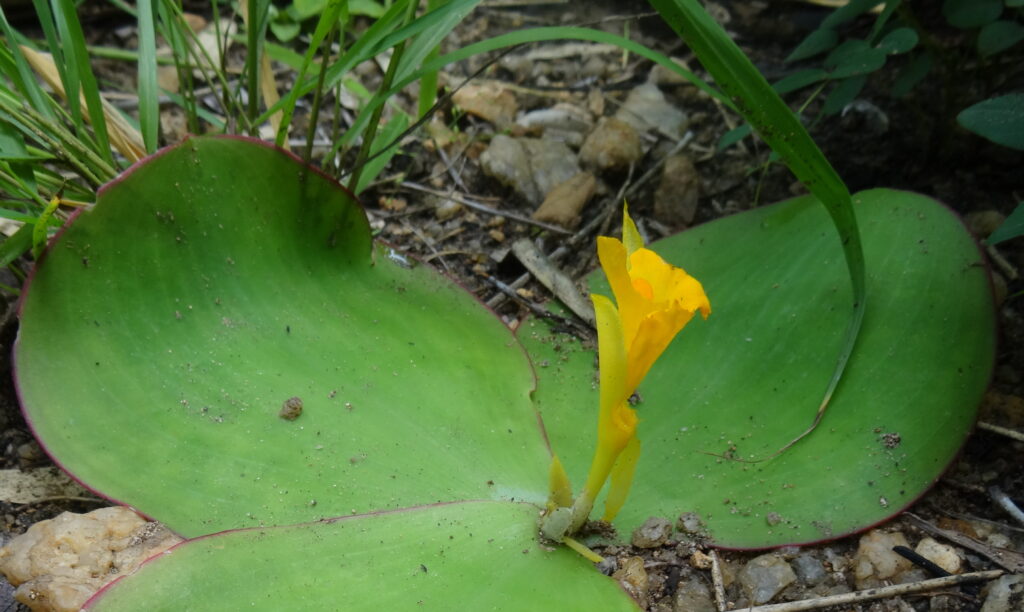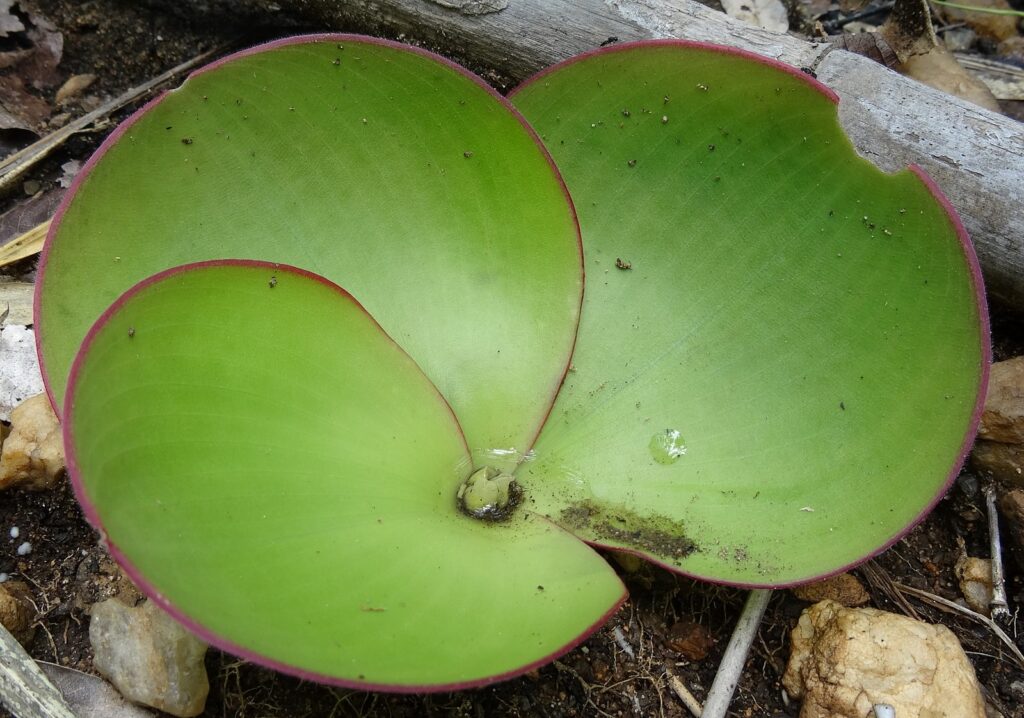Nigeria is a country located on Africa’s western coast, south of Niger, west of Chad, northwest of Cameroon, and east of Benin. This geographically and culturally diverse country has plentiful natural resources, people who speak hundreds of different languages, and climates ranging from arid to tropical. The size of the country rivals that of Texas in the United States – it is geographically huge! On top of that, the country is the most populous in Africa, with people displaying a wide array of cultures and language groups.
Representing this vibrant country is the national flower of Nigeria: the yellow trumpet. Let’s learn more about this unique flower together now!
About Nigeria
As a large, geographically diverse country, Nigeria has multiple terrains and climates. In the north, Nigeria’s landscape is defined by plains. At the country’s center, extinct volcanic mountains rise above the plains, with a landscape of lava surfaces. In the southern mountain region, near the border with Cameroon, mountains rise thousands of feet from sea level. Generally speaking, in most parts of the country, Nigeria’s climate is tropical and oscillates between rainy and dry seasons. However, these vary throughout the country, with the southeastern region remaining hot and humid while the southwest tends to be dry.
The equatorial line splits Nigeria. This country’s diverse landscape includes freshwater swamps, dense rainforests, tropical grassland, deserts, and river forest zones. In some places, the original habitats have been replaced by farming and large plantations. Sadly, this has contributed to losing plant diversity and destroying native ecosystems. Particularly in the north, overfarming and bush burning have contributed to the loss of plant life. As a result, this overworking of the land has contributed to the Sahara Desert extending further south into the country.
Nigeria’s national flower is both representative of this unique country’s landscape and people and is a greater symbol of the many countries across the African continent where the flower grows. Now that you know a little bit about Nigeria, this article will introduce you to the golden trumpet flower. We will explore its appearance, where it grows, and its distinctive role in Nigerian culture. You will also learn why this flower was chosen to be the national flower of Nigeria. We will learn exactly why the Nigerian people love it so much. Let’s learn more now!

As a large, geographically diverse country, Nigeria has multiple terrains and climates. The breathtaking
Oke Idanreis located in southwestern Nigeria.
©Fela Sanu/Shutterstock.com
What is Nigeria’s National Flower?
The national flower of Nigeria is the species Costus spectabilis, known commonly as the yellow trumpet flower. This herbaceous perennial species has large, flat leaves and showy yellow flowers. This bright, beautiful flower grows across the country of Nigeria. However, it can also be found growing throughout the African continent. Africa is huge! Across the continent, you can find yellow trumpets growing from Sierra Leone to Sudan or as far to the south as Angola and Zimbabwe.
As the national flower of Nigeria, the yellow trumpet is said to symbolize the country’s beauty, uniqueness, and prosperity. Others suggest that it represents resilience, cheerfulness, and a sunny attitude among the Nigerian people.
If you are in Nigeria, you can find this flower represented in numerous artifacts and symbols. This includes its visual representation in the National Coat of Arms. However, in the National Coat of Arms, the yellow trumpet is represented by the inclusion of several small, bright red flowers at the bottom.

The national flower of Nigeria is
Costus spectabilis. This herbaceous perennial species has large, flat leaves and showy yellow flowers.
©https://commons.wikimedia.org/wiki/File:Costus_spectabilis_1_(11831504854).jpg – License
What is the Yellow Trumpet, the National Flower of Nigeria?
The national flower of Nigeria, the yellow trumpet, is a tropical flowering herb. Known scientifically as Costus spectabilis, the yellow trumpet produces four large, fleshy leaves. These form a rosette as they grow close to the ground. They grow only a few inches above the soil, lying flat and forming a base for the showy yellow flowers. The green leaves sometimes have purple or pink-colored margins. When the trumpet-shaped flowers bloom, they are large and bright in color. However, they die quickly, soon to be replaced by a fresh blossom.
Yet, while they bloom, the trumpet-shaped yellow flowers are beautiful! They typically reach up to 3.5 or 4 inches across, growing up from the leaves that grow to each be about 5 inches. These showy flowers have soft petals and edges that can flare in a trumpet shape or have a broader, frilly edge. The flowers bloom in shades of yellow, orange, or red beginning in the spring season. The plant continues producing new blossoms until early winter.
Then, in winter, the plant becomes dormant. This reflects the Costus spectabilis classification as a rhizomatous geophyte. In fact, it is normal for these species to store energy and water in an organ underground. Their roots have sheaths that spread underneath the soil to produce offshoots for new plants. During its growth cycle, the plant responds to the seasonal rains of April and May, blooming until October or November. When it goes dormant, the rhizomatous geophytes shrink up into worm-like shapes waiting until the return of the spring rainy season to reinvigorate the plant once again.

produces large, fleshy leaves that form a rosette as they grow close to the ground.
©https://commons.wikimedia.org/wiki/File:Costus_spectabilis_2_(11831859906).jpg – License
Where Does the Yellow Trumpet Grow?
Although the yellow trumpet is Nigeria’s national flower, it grows across many different African countries. It is a tropical flower that thrives in rainy and humid conditions. However, like many other species in the Costus genus, yellow trumpets prefer shade conditions, absorbing dappled sunlight and enjoying moist soil and tropical, humid climates. Typically, yellow trumpets may be found growing natively in countries on the southwest coast of the African continent, east all the way to Sudan, and south all the way to Zimbabwe. According to scientists, the yellow trumpet grows best in USDA hardiness zones 8b to 10b.
What is the Cultural Significance of the Yellow Trumpet?
The yellow trumpet is significant throughout many African countries and cultures where it grows natively. However, for hundreds or even thousands of years, the root of plants in the Costus genus have had significance for their use in making incense and medicines. From being sent on ancient trade routes to traditional healers and even philosophers proclaiming its values, the roots and flowers have been cherished for many uses. Historically, people even ate parts of the flower as a snack. As an herb, it is fully edible. However, the Costus spectabilis is unique as an herb because it has a fruity flavor and is said to taste good raw.
Perhaps the yellow trumpet has the greatest cultural significance to the Nigerian people, as it is represented on the Coat of Arms. It may have been included initially because it grows widely throughout the country’s regions. However, some experts say that the plant is not known well among Nigerian gardeners and plant experts. In fact, while it once grew widely, the yellow trumpet has become rare and threatened in the country.
Another fun way that Nigeria’s national flower popped up in popular culture is through Meghan Markle and Prince Harry’s wedding. Meghan Markle chose to include flowers from all British Commonwealth countries represented in her veil. She included the yellow trumpet to symbolize Nigeria.
The photo featured at the top of this post is © Ton Rulkens from Mozambique, CC BY-SA 2.0
Thank you for reading! Have some feedback for us? Contact the AZ Animals editorial team.






